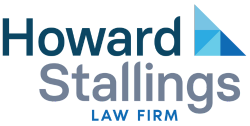Emergency Paid Leave and Paid Sick Leave—Families First Coronavirus Response Act
We understand that you may have legal questions given the evolving news and updates around the spread of COVID-19.
We remain dedicated to your success and are here for you. Let us know how we can help.
The Families First Coronavirus Response Act (“FFCRA”) becomes effective on April 1, 2020. This date is important because employer’s who implement the leave required under the Act before that may not be eligible for the tax incentives it offers. See supra “Tax Issues for Employers to be Aware of.”
The new legislation has two main components that affect the paid leave employer’s must permit employees to take: the Emergency Family and Medical Leave Expansion Act and the Emergency Paid Sick Leave Act. Both are meant to remain in effect until December 31, 2020. Both the Acts apply to all private sector employers with fewer than 500 employees and certain public sector employers.
Emergency Family and Medical Leave Expansion Act
The Emergency Family Medical Leave Expansion Act (“EFMLEA”) tweaks the existing EMLA by adding another basis under which employees can request FMLA leave. In addition to the birth of a child or a serious health condition, employees can now request up to 12 weeks of leave if the employee is unable to work (or telework) due to the need to care for a minor child if that child’s school or childcare facility is closed due to the COVID-19 pandemic. The twelve weeks would be a part of the total twelve weeks already allowed under the FMLA, not an additional twelve weeks. However, there are some differences with respect to how this type of FMLA leave is treated:
- The first two weeks (10 days) can be unpaid, though the employee can opt to use accrued PTO during that time in order to get paid. However, the employer can NOT force the employee to do so.
- After the first ten days, weeks 3-12 must be paid at 2/3 the employee’s normal rate of pay, capped at $200/day or $10,000 total.
- All employees who have been on payroll for at least thirty (30) days are eligible for to take leave under this Act, regardless of their full-time or part-time status.
Lastly, with regards to notice to the employer, an employee must provide notice to the that they plan to take leave under this Act if the reason for seeking leave is foreseeable.
Emergency Paid Sick Leave Act
This portion of the Families First Coronavirus Response Act provides mandatory paid sick leave under certain circumstances. Each full-time employee is entitled to 2 weeks of paid sick time when the employee is unable to work due to the following circumstances:
- a federal, state, or local quarantine due to COVID-19;
- Health-care provider has advised the employee to self-quarantine due to COVID-19;
- the employee is experiencing COVID-19 symptoms and is a medical diagnosis;
- the employee is caring for an individual who is subject to a federal, state, or local COVID-19 quarantine;
- the employee must care for their minor child if that child’s school or childcare provider is unavailable due to COVID-19 precautions;
- the employee is experiencing a substantially similar condition as specified by the Secretary of Health and Human Services
An employee taking emergency sick leave under reasons 1, 2, or 3 listed above is entitled to their regular rate of pay capped at $511/day or $5110 total, but an employee taking emergency paid sick leave under reasons 4, 5, or 6 listed above is only entitled to two-thirds of their regular rate capped at $200/day or $2,000 total.
Employer are prohibited from requiring employers from finding replacement coverage as a condition of using paid sick leave under this provisions and employers cannot require employees to utilize paid sick leave under any employer policy prior to using sick leave under this Act.
Part Time Employees
Each employee seeking paid leave under this Act is entitled to 2/3 the regular rate of pay for the number of hours the employee would otherwise be normally scheduled to work. In the case of an employee whose schedule varies from week to week, the employer can use the following number of hours:
- The average number of hours the employee was scheduled per day over the 6-month period prior to the date the employee takes leave; OR
- If the employee did not work for the prior 6-month period, the reasonable expectation of the employee at the time of hiring for the number of hours they’d be scheduled to work.
Exceptions to Coverage
Employers of Healthcare Workers and First Responders can elect to exclude them from the provisions of both the EFMLEA and the Emergency Paid Sick Leave Act. Further, the Act permits the Secretary of Labor to issue regulations “for good cause” to exclude healthcare providers and emergency responders—though the applicable regulations have not yet been released.
Further, small businesses with less than fifty employees may or may not be required to provide leave under either Act if it would jeopardize the viability of their business. Again, the Secretary of Labor will make this decision in the coming regulations that are not yet released.
Enforcement
With regards to both Acts, the Department of Labor has indicated that it will be observing a 30-day “grace period” for the first 30 days after they take effect, so long as employers are acting reasonably and in good faith to comply. The Department has indicated that “good faith exists” when violations are remedied and the employee is made whole as soon as practicable by the employer, the violations were not willful, and the Department receives a written commitment from the employer to comply with the Act(s) in the future.
Given the evolving news and updates around the spread of COVID-19 (Coronavirus), Howard, Stallings, From, Atkins, Angell & Davis remains open for business, and our offices remain staffed appropriately to meet your needs. While many of our attorneys and staff will be working remotely during the coming weeks, rest assured that we are still available to you, our phone numbers and emails are still the best way to reach us. We understand that you may have legal questions as we forge the path ahead. We remain dedicated to your success and are here for you. Let us know how we can help.
For your reference, we are compiling and analyzing state and federal legal updates here, which may effect your business. Visit our Business Legal Resource Center for updates.





